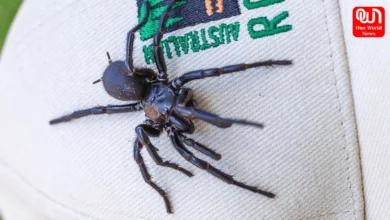
Caste, Religion and the relation with Stunting in Children, How can it be prevented?
Stunting in Children: Stunting is a result of inadequate nutrition, repeated illnesses, and a lack of psychological stimulation. A child whose age is more than two standard deviations below the WHO Children’s Growth Standards median, then they will be called stunned.
Early-life stunting in children has negative functional implications especially during the first 1000 days from conception to the age of two. Poor cognitive and school performance, low adult income, lost productivity, and, when combined with excessive weight gain later in childhood, an increased risk of nutrition-related chronic illnesses in adulthood are just a few of the effects stated by WHO.
Well, while stunting in children is an issue in the country, there’s a connection between stunting, caste and religion.
Read More:- The 11 Best Romantic Places in Goa
In a study titled “The Missing Piece of the Puzzle: Caste Discrimination and Stunting” it has been found that 36 per cent of children in India are chronically malnourished, stunting rates vary by caste and religious group. Children from the Dalit, Adivasi, Upper Caste Muslim and OBC communities are 2 to 3 times more stunted than children from the upper caste.
It also stated that the Hindu UC children are, in fact, taller than youngsters from Sub-Saharan Africa. The report was co-authored by Ashwini Deshpande of Ashoka University’s Center for Economic Data and Analysis and Rajesh Ramachandran of the University of Heidelberg
Comparing the heights of Upper caste Indians with the Indians in Sub-Saharan Africa and other minorities in India, it can be noted that in the SSA, 31% of children are stunted. UC-Hindu children are 5 percent less likely to be stunted than SSA children, with a stunting rate of 26%. Stunted children account for 40, 36, and 35 percent of SC-ST, OBC, and UC-Muslim youngsters, respectively.
In comparison to UC-Hindu children, SC-ST, OBCs, and UC-Muslim children are 14, 10, and 9 percentage points, or 35 to 50 per cent, more likely to be stunted.
Five key variables that influence a child’s height-
-
lack of sanitation can be measured by two variables: no household access to a toilet facility and household members defecating in a bush/field and the exposure of a household to open defecation
-
mother’s human capital that can be measured by two indicators: years of schooling and ability to read as measured by an actual test
-
anthropometric status of the mother, as represented in the height-for-age (HFA)-Z scoring and in weight-for-height (WFH)-Z scoring and age
-
asset disparities captured by the wealth indeximum score of the wealth index factor
-
intra-household allocation and fertility decisions
How to deal with stunting?
Well, where the fact that stunting in children varies with the caste and religion, it is important to note that the rates of Stunting in India are obviously high. Malnourishment is a worrying concern in the country and here’re are a few ways to prevent stunting (as stated in Preventing Stunting: Why it Matters, What it Takes)
Read more:- Face Yoga for Beginners: What is it & benefits of practising it
Stunting prevention should begin early in life, with interventions that ensure that pregnant and lactating mothers are adequately nourished, that children receive exclusive breastfeeding for the first 6 months of life, and that children aged 6–23 months receive adequate complementary feeding in addition to breastfeeding.
Because the effects of undernutrition begin at conception, ensuring that pregnant women are well fed may need acting before pregnancy, i.e. throughout adolescence and before the next pregnancy.
The ultimate goal of stunting prevention measures should be to ensure that each child’s nutritional needs are satisfied, even while still in the womb, and that sickness is avoided. To grow, develop, and stay healthy, an individual needs around 40 different nutrients in various quantities.
Diet and nutrition to prevent stunting: Consumption of a sufficiently diversified diet, including breast milk, as well as a variety of plant-source foods (vegetables, fruits, staples), animal-source foods (dairy, eggs, fish, meat), and fortified foods, is required to meet these requirements. Specially manufactured meals that cover the so-called “nutrient gap” may be necessary if such a diversity of foods is not accessible, or for individuals who (typically for economic reasons) cannot access such a variety. It’s possible that these will have to be made accessible at a reduced or free cost.








